Interior design trends for 2025 focus on the intensification of natural elements, and new trends in color palettes. By introducing more natural wood, stone and greenery, designers are creating spaces that are comfortable and back to nature. This design not only allows occupants to maintain an intimate connection with nature, but also echoes the concept of sustainability through the use of eco-friendly materials.
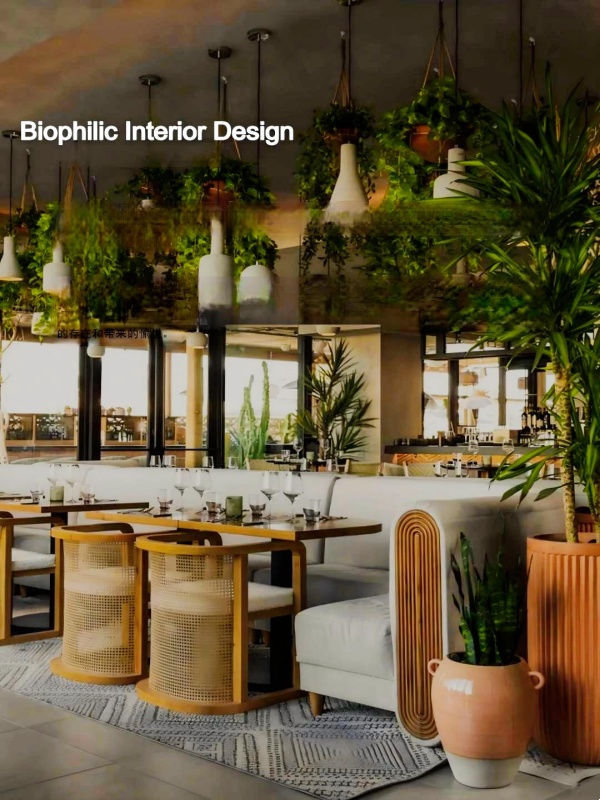
Biophilic Interior Design
Biophilic design is a concept that has emerged in architecture and interior design in recent years that emphasizes helping people connect with nature by incorporating natural elements into the built environment. This design approach aims to improve people's quality of life and enhance the comfort and wellness of a space.
Biophilic design stems from the concept of biophilia, which refers to the innate human affinity for nature and life. This design concept incorporates elements from nature, such as plants, bodies of water, natural light and organic materials to create an interior environment that is connected to nature. In this way, designers enhance the physical and mental well-being of the occupants, allowing them to feel the presence of nature and the pleasure it brings in their daily lives.
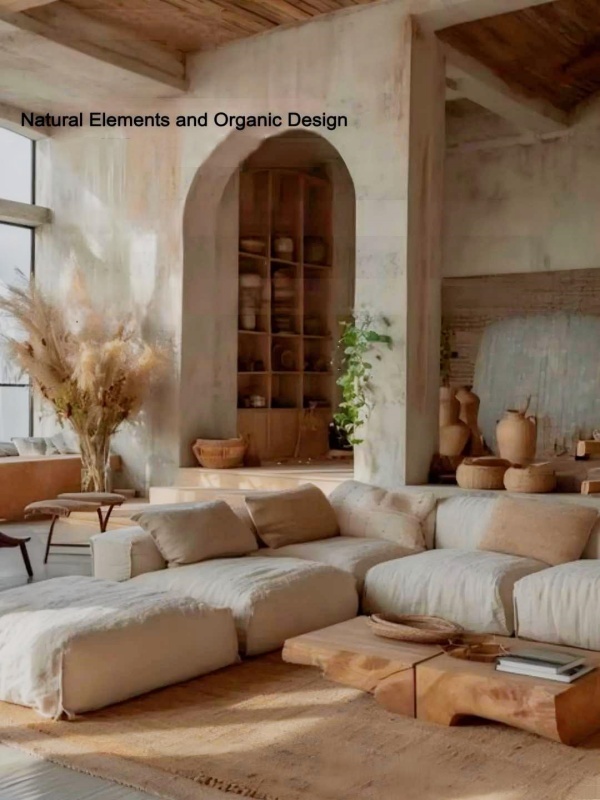
Natural Elements and Organic Design
Natural Elements and Organic Design is an important concept in modern architecture and interior design, aiming to create spaces in harmony with nature by introducing natural elements and organic forms. This design philosophy emphasizes the connection between humans and nature, and the sustainability and environmental friendliness of the design.
Natural elements and organic design involves the use of elements such as plants, natural light, natural materials (e.g., wood, stone), and natural landscapes in the design to enhance the comfort and aesthetics of the space. It not only focuses on the aesthetics of the interior environment, but also takes into account the psychological and physiological health of the occupants.
In terms of color schemes, the dopamine color palette remains hugely popular! Bright, vibrant colors infuse spaces with happy and positive emotional energy, and whether in the living room or bedroom, bright colors will be the focal point.
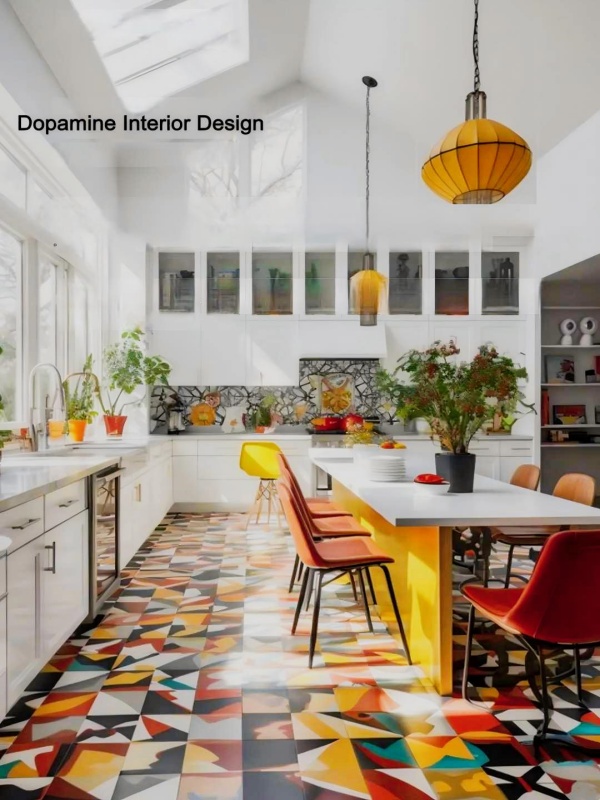
Dopamine Interior Design
"Dopamine color matching" is a recent trend in design that focuses on the use of bright, vibrant colors to stimulate a positive emotional response, similar to the pleasurable feeling of dopamine. This color palette creates a happy, positive and energetic atmosphere through visual impact and strong emotional reflection.
Dopamine color matching comes from the recognition of dopamine, a brain chemical associated with feelings of happiness, accomplishment and pleasure. By combining color and emotional responses, designers have begun to use dopamine color schemes to create spaces that are filled with happiness, energy and positive vibes.
Additionally, the fusion of retro and futuristic is becoming a major trend in design for 2025. The collision of classic vintage design and modern technology gives spaces a sense of history without losing the convenience and comfort of modernization.
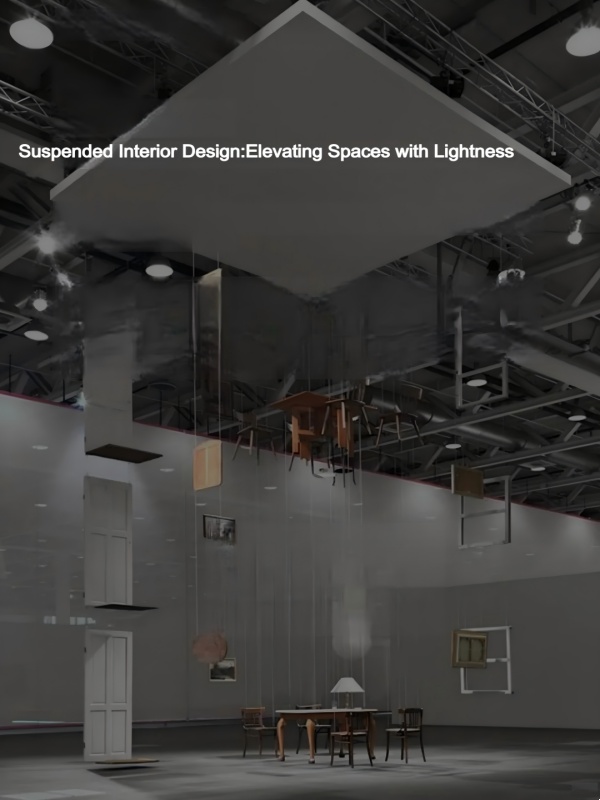
Suspended Interior Design:Elevating Spaces with Lightness
Suspended Interior Design is an innovative design concept that emphasizes the creation of “levitation” in space. Through clever design and material selection, Suspended Interior Design allows furniture, fixtures and other elements to appear to float in the air, creating a light, open and contemporary sense of space.
Suspended interiors create a visual lightness through the use of transparent materials and elongated support structures that make furniture and fixtures seem to float in the air. This design concept optimizes the use of space and reduces floor occupancy, making spaces appear more spacious and open, especially for modern or small living environments. At the same time, levitation design is often combined with modern minimalist styles that emphasize simple lines and a clean look, creating a sleek and uncluttered spatial atmosphere. In addition, levitation furniture is often multifunctional and flexible to meet different usage needs, enhancing the practicality and emotional experience of the space. Through these features, levitation interior design not only enhances the sense of space, but also stimulates the creativity and curiosity of the occupants.
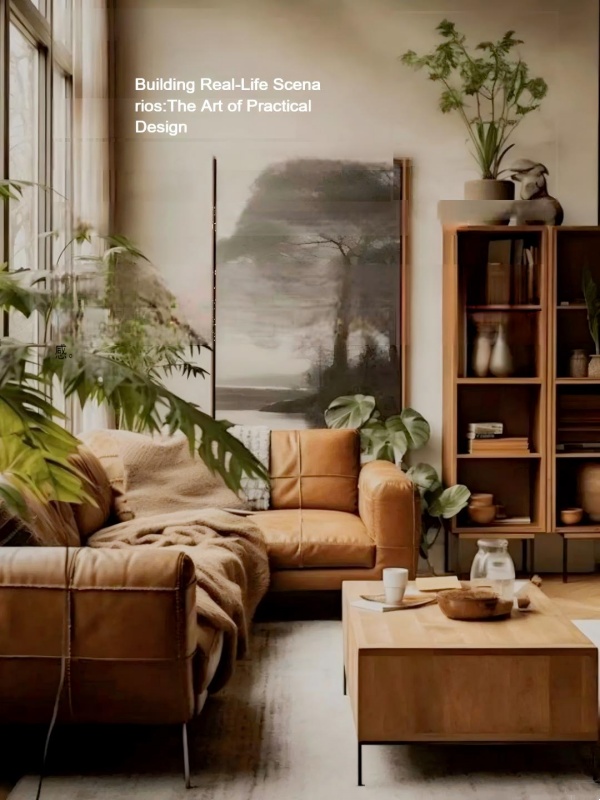
Building Real-Life Scenarios:The Art of Practical Design
Building Real-Life Scenarios is a design concept that emphasizes the close integration of the space with the needs of the occupants in their daily lives. By creating real-life scenarios, designers are able to provide a more comfortable and convenient living experience for the occupants.
The creation of living scenes focuses on integrating humanized elements into the design, emphasizing the practicality and emotional connection of the space. Through rational layout and furniture selection, designers can make the space reflect the personality and lifestyle of the occupants. This design philosophy often includes flexible space planning in order to accommodate the different needs of family members and create environments that are suitable for daily activities. In addition, living scenes often incorporate natural elements, such as greenery and natural light, to add a sense of warmth and intimacy to the space. Through these features, the creation of a living scene not only enhances the functionality of the space, but also strengthens the sense of belonging and well-being of the occupants.
Interior design in 2025 is both a return to nature and an embrace of technology, while expressing emotion through color, providing more inspiration and possibilities for your home.
Our hours
Mon - Friday : 9 AM - 6 PM
Sat - Sun : Online Service
(all hours are Beijing Time)